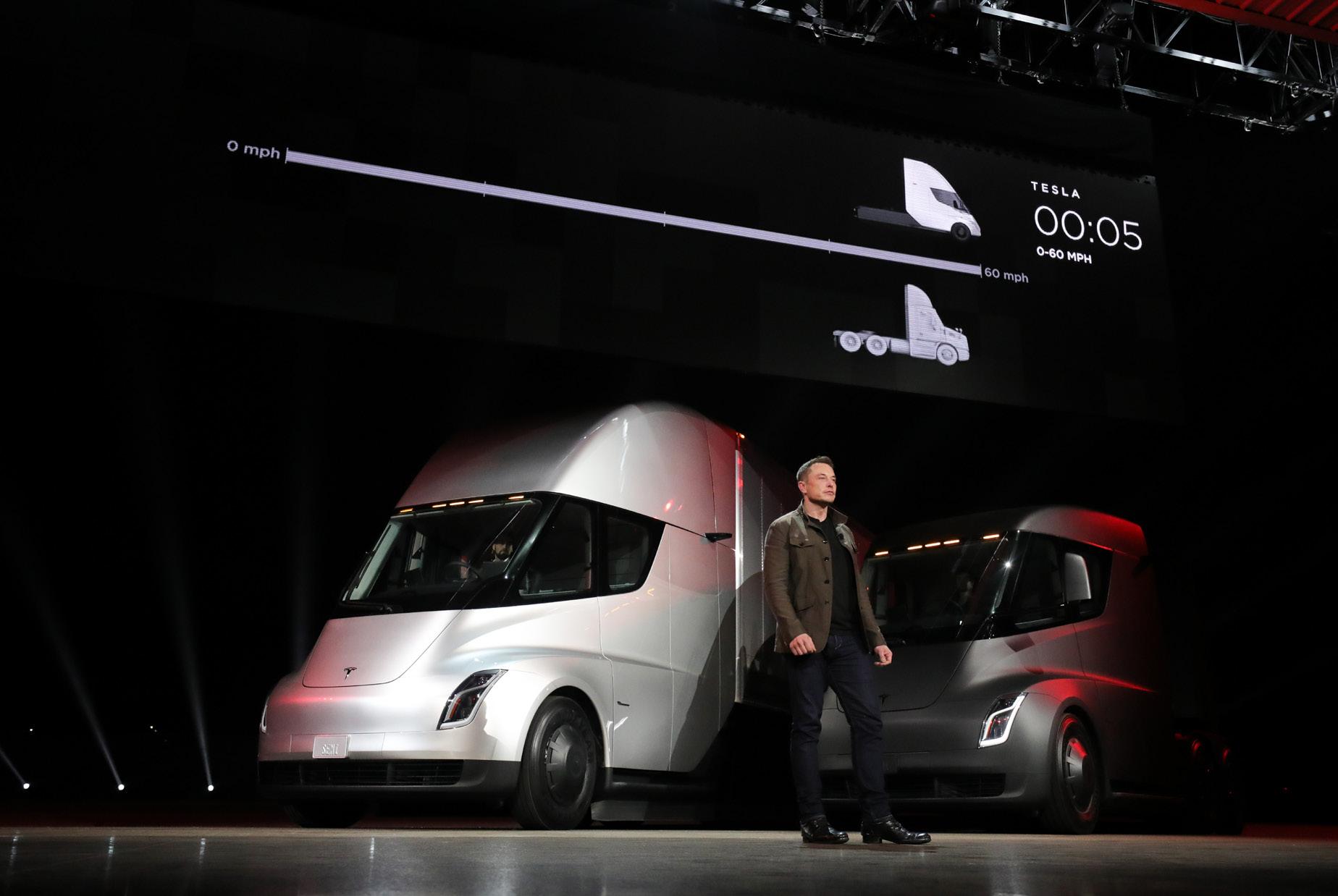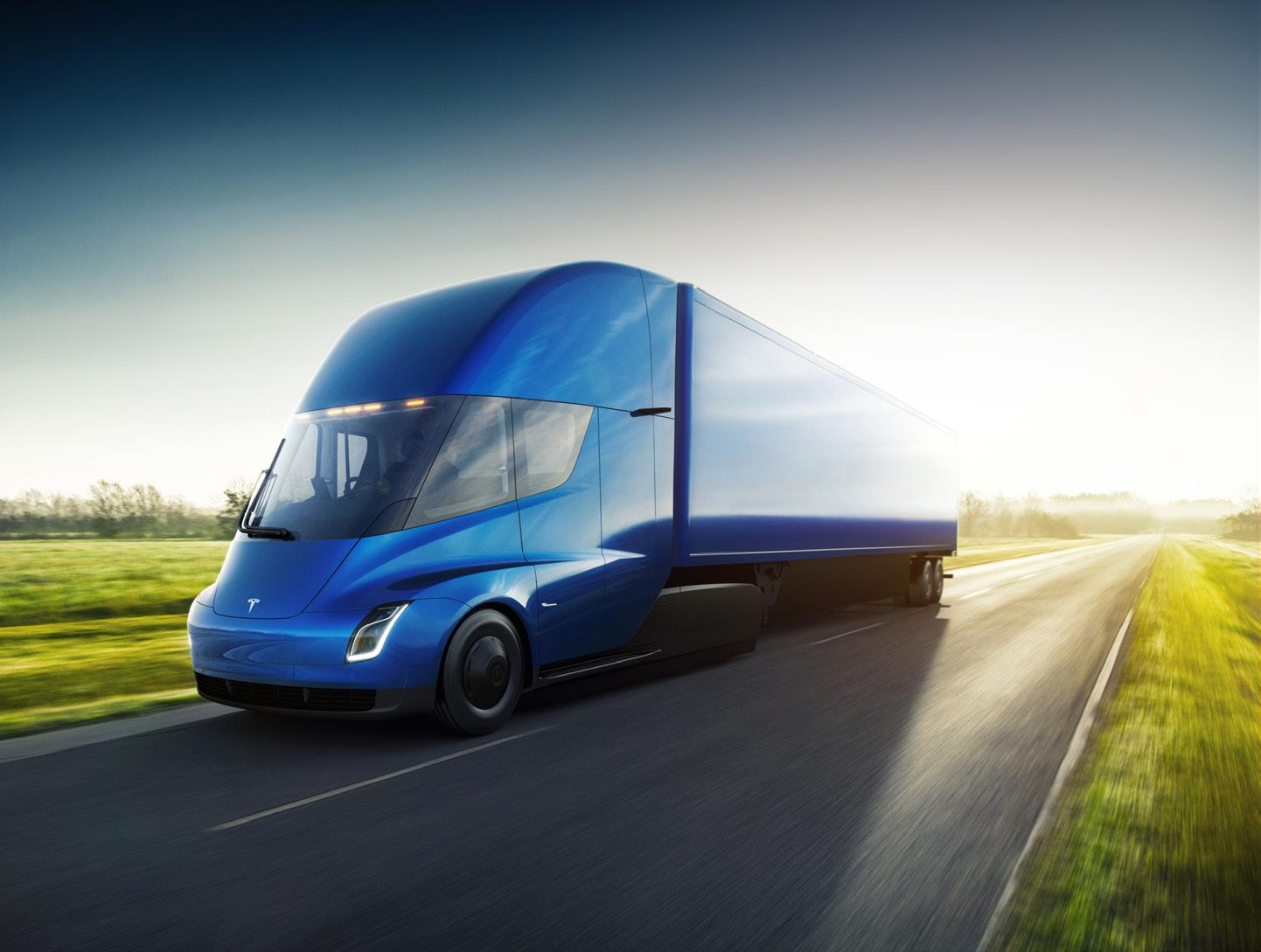
3 minute read
TESLA SEMI
The Tesla Semi aims to dramatically reduce emissions but can it break into the commercial market?
PRODUCTION: Emily White
// On the evening of November 16th, Elon Musk revealed the latest Tesla passion project to the world; an all electric semi truck that boasts some pretty impressive performance stats.
As Musk emerged onto the stage to a euphoric audience, it became clear that this unveiling in Hawthorne, California was more about fuelling the excitement and hype of the project rather than providing us with any substantial details. Without a doubt, the truck is capturing the attention of the freight industry, and is certainly creating much furore among Tesla enthusiasts.

But what do we really know about the Semi so far, and how big will the impact be on emissions? The Tesla semi is a fully electric Class 8 truck that the company states is capable of going from 0-60 in five seconds when unloaded and 20 seconds with a full 80,000-pound load. That’s ten
seconds faster than the average diesel truck. The Semi also claims to have a 500 mile range at maximum weight which sounds impressive when you consider that the majority of freight trucks rarely move more than 250 miles. Performance features include enhanced autopilot, lane-keeping technology and a design that is said to make jack-knifing impossible.
In terms of cost, Musk has set a wholesale price of seven cents per kilowatt hour, which has already prompted some questioning from electricity experts. This means that on a 100 mile route, the Semi will average at $1.26 per mile compared to the $1.51 average for diesel trucks.
Production will begin in 2019 and if you want to get your hands on one, the reservation price is $5000. So what about emissions?
Globally, freight vehicles account for 7% of all greenhouse gas emissions and make up 32% of total transport related energy demand with that figure increasing every year according to the International Energy Agency.
As the Semi’s only fuel source

is electricity, it would produce zero emissions, which if embraced by the freight industry, would have a significant impact on the amount of greenhouse gases produced every year worldwide. However, selling to the commercial market may prove to be a challenge as there have been a number of concerns raised about the overall cost of the Semi. Research from the Carnegie Melon University has found that batterypowered semis only work at the 300 mile mark; anything more would be too costly and limit cargo capacity due to the weight and volume of the battery. UPS have already demonstrated that it is more-than possible to reduce emissions in diesel vehicles effectively and cheaply, simply by optimising its routes so drivers very rarely have to turn left. This saves the company 10 million gallons in fuel and reduces carbon dioxide emissions by 22,000 tons each year.
Overall, Tesla has been encouraged by trucking leaders into the market, as there has been acknowledgment that the industry is certainly moving towards some kind of electrification. However,

alternative technologies have already been embraced with vehicles being produced that can run on propane and hydrogen fuel cells. Battery power, at present, still carries hang-ups around battery weight and availability of charging stations.
Low petrol and diesel prices mean there’s little incentive for truck operators to make the switch and pay the bulk cost of more expensive alternative fuel freights.
The Muskian vision of the Semi is ambitious and his plans for battery powered vehicles carry all the hallmarks of Silicon Valley optimism. If Musk can truly deliver on his vision, it will be a landmark development in the world of freight and a step closer to reducing greenhouse emissions for a sustainable future.
TESLA SEMI
0800 756 9960 www.tesla.com







